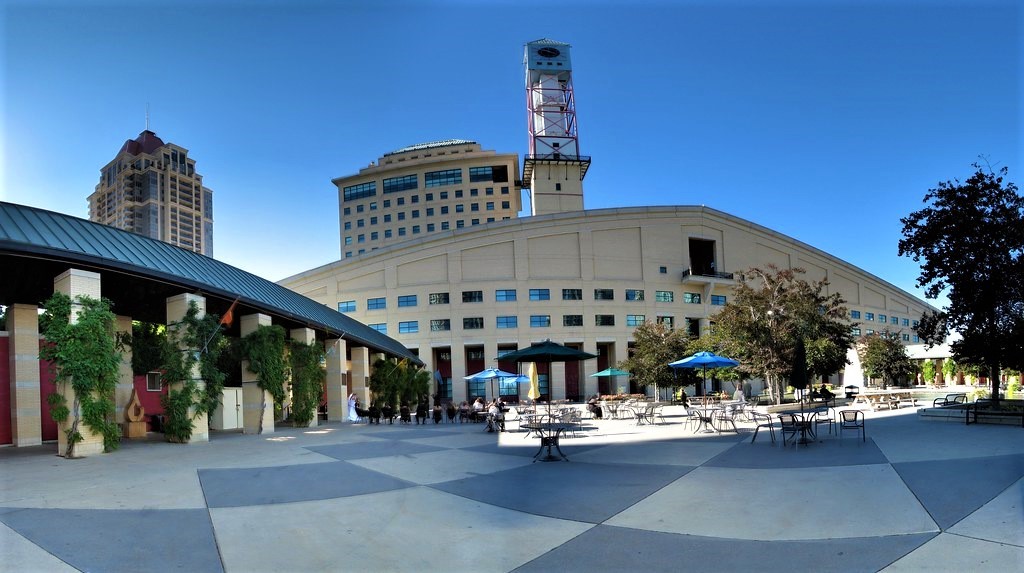
Cities need more power and a better funding formula to help them ‘prepare for the unexpected’
Hazel McCallion was born three years after the Spanish-Flu pandemic and is now living through this one.
That’s tough to do when you’re in your 100th year on the planet and a deadly coronavirus is feasting on our sick and elderly. But she remains a medical marvel who spends less time tapping into our healthcare system than people half her age. As her ‘Hurricane’ nickname implies, McCallion has a Category 5 constitution.
She grew up in the Great Depression era when as a young schoolgirl, she was charged with keeping the books for her father’s fish processing plant on the Gaspé coast. She said it was the kind of upbringing that filled her with confidence, discipline, and left her with the work ethic of a Navy Seal. These three qualities fueled her 36-year run (1978-2014) as mayor of Mississauga.
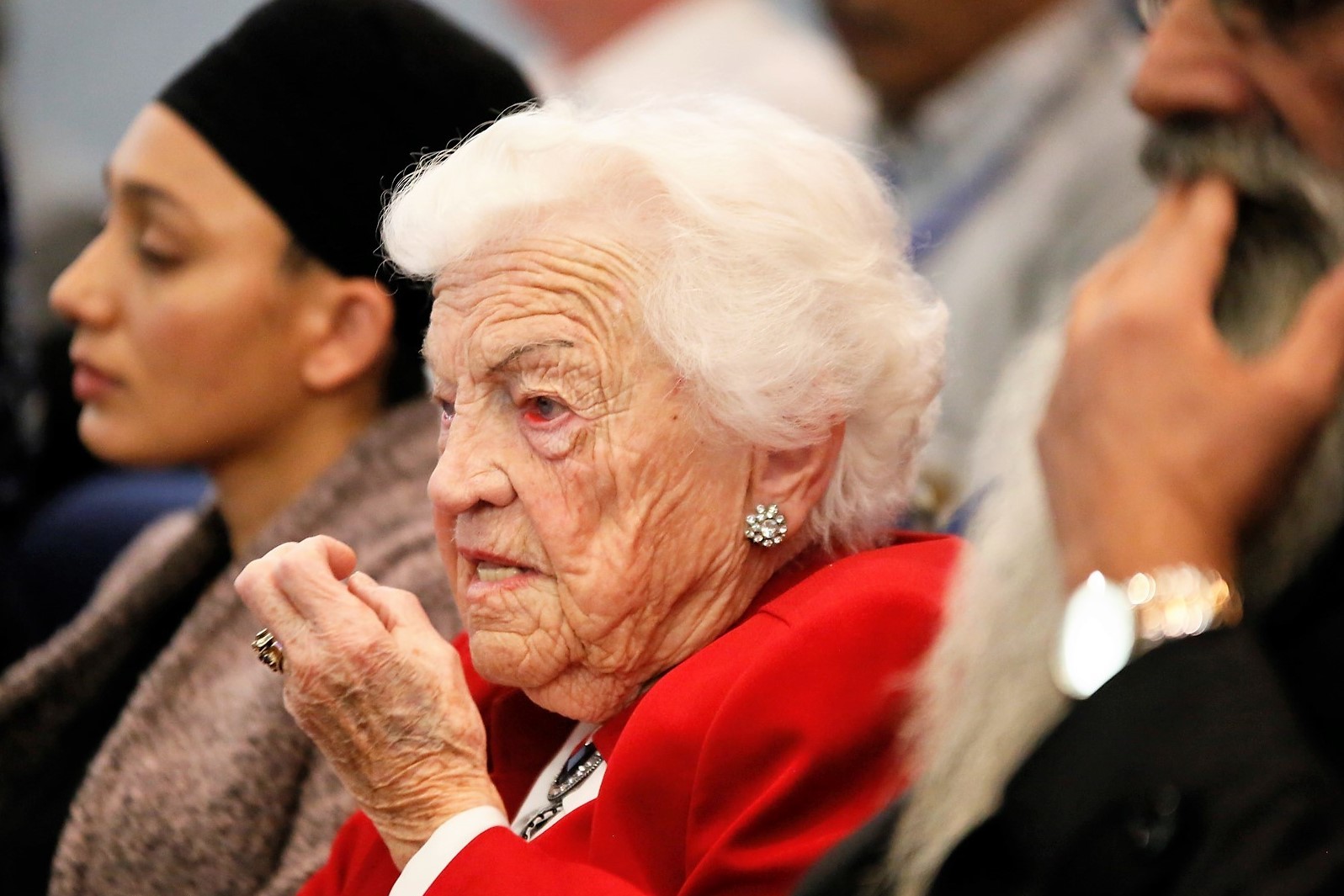
Former mayor Hazel McCallion couldn't secure new revenue tools
McCallion’s political philosophy derived from those early days in The Dirty 30s when the ethical dimensions of disparities made everyone worry that another economic meltdown was just around the corner. One of her rules applied equally whether at the fish plant or as mayor of Canada’s sixth largest city: “prepare for the unexpected.”
These words are even more prescient as a rogue virus causes municipalities to buckle, and our economy fluctuates between bad to dire. But even McCallion’s best laid plans would prove ineffective against a pandemic that has shaken our world to its core.
Let’s start by checking out its financial impact on Mississauga:
• losses, conservatively, could reach $60 million by end of the spring, and upwards of $100 million by year’s end;
• property tax deferrals during the first three months of the pandemic will check in at $360 million; and
• MiWay transit losses could reach $44 million by November.
Brampton’s are just as troubling:
• a potential loss in revenues of almost $126 million by the end of the year;
• a projected deficit of $54.7 million; and
• Brampton Transit losses are $21 million in just the first three months of the pandemic.
More bad numbers:
• Mississauga’s infrastructure gap sits at $274 million, and Brampton’s is $364 million; and
• Mississauga could see a 17 percent hike in taxes in its 2021 budget, while Brampton taxpayers also face a crippling increase if there is no fiscal relief from the province or Ottawa.
The guesstimate from the Federation of Canadian Municipalities (FCM), which calls the fiscal situation in our cities and towns untenable, means they will need from $10 to $15 billion transferred immediately to this lower tier of government. If that happens, Brampton and Mississauga might share a pool of between $400 and $600 million, on a per capita basis.
Meanwhile, Mississauga still has $905 million in reserves (like the savings accounts families keep for their children’s education or a new roof in a few years) but most of it can’t be used for shortfalls caused by COVID-19 – although there might be some relief from a tax reserve fund.
Traditionally, cities like Mississauga and Brampton put money in reserve funds for emergencies, but in the past, that went to services like snow clearing, flood control, or other weather extremes. The underlying problem is that cities are mandated to balance their budgets by the Ontario government, meaning COVID-19 will ratchet up the pressure on jurisdictions to be fiscally prudent during a crisis when they should be bold. They can, however, take on debt to fund new capital projects.
Still, in light of this pandemic, all bets are off. Cities might have to defer, delay, or cancel many of their scheduled building projects. The province could also do the same, pulling back on the light rail transit (LRT) scheduled to begin construction this year on a new Hurontario line.
Unlike Brampton, Mississauga has a ballooning business sector, with sizeable commercial tax revenues, and checks in with over $10 billion in assets, making it less likely to get poleaxed by the pandemic.
Then there is this. Despite Mississauga’s better fiscal health, its 2020 budget featured a stiff 4.52 percent raise in its share of taxes, while Brampton countered with a zero-tax hike. Which begs a question: Why? (Look for the answer a little later)
Both will have to get very creative to come up with a balanced budget in 2021. As the FCM said, the solution for cities is bailouts from the two top tiers of government, and pressure is mounting to see that happen. Mississauga’s chief financial officer, Gary Kent, told The Pointer, “I can tell you the federal government and the provincial government are listening.”
They may have heard the latest proposal from new Ontario Liberal leader Steven Del Duca who, this week, asked the Doug Ford government and the federals Liberals in Ottawa to bring immediate help to municipal governments. He calls for creation of the “Ontario Emergency Municipal Support Fund.”
Del Duca, the former transport minister in the Kathleen Wynne government, also asks for a doubling of the provincial gas tax program to help boost the revenues needed for transit. In Brampton and Mississauga, those systems are free to riders while the pandemic continues and designated an essential service. Del Duca wants Ford to “expedite” infrastructure funding to already approved projects in municipalities and see it as a form of stimulus to communities. The LRT in Mississauga, which will turn around in the southern end of Brampton, would inject economic stimulus into both communities.
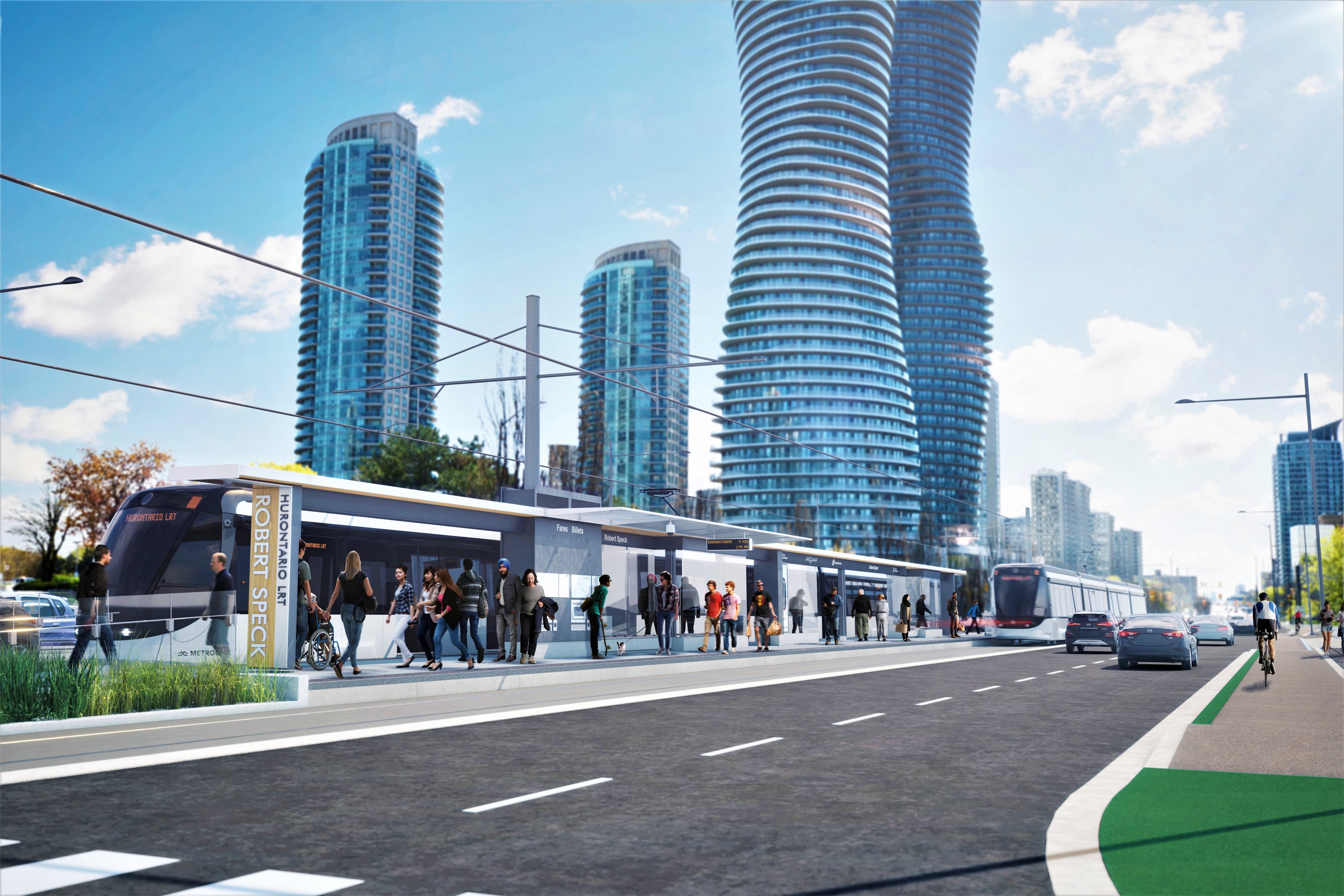
The Hurontario LRT
Reports say Ford has consulted with Del Duca, and both mayor Bonnie Crombie and Patrick Brown are hopeful their cities will see significant help from the top two levels of government.
Crombie released a social media posting near the end of April expressing her city’s needs. “Unlike the federal or provincial governments, cities operate most like a business,” she wrote. “To be exact, we are in the service delivery business, providing hundreds of services to residents. From fire, ambulance, police, water, transit, roads, recreation, libraries, shelters, housing, snow clearing, and so much more – the services cities provide impact you most on a daily basis. In Mississauga, we are currently losing $20M per month. In other cities like Toronto, that number is $65M per week. The cumulative number gets larger, the longer this crisis continues. In Mississauga, we project $60M in losses by the end of June and $90M by September.”
Crombie and Brown think cities are an essential service and keep Canadians safe and healthy. They are also economic engines, and both sit atop one of the fastest growing areas of the country, with plenty of 400-series highways, a major international airport, and more growth to come. It’s clear that Ford is listening, and this week said he and his finance minister Rod Phillips are “working on a plan.”
COVID-19 has wreaked havoc on the fiscal makeup of cities at a pace unseen since the days of The Great Depression. This has forced Peel region’s two largest cities to virtually become vassals of the state – dependent on the all-powerful provincial and federal agencies that hold the largest pools of cash. And each day the jobless numbers rise, or local businesses remain shuttered, the costs to pay for transit, fire, EMS, or essential services like water, power, sewage treatment, garbage pickup in partnership with the region, brings everyone closer to the ledge.
Cities don’t have a license to print money, like Ottawa does. They can’t dine out on sales tax revenues like the province. To be fair, both the feds and the province are also suffering massive cost overruns, especially in the healthcare field and bailouts of those who are out of work.
The cities aren’t running on empty yet, but the archaic Municipal Act leaves them in the lurch, unable to tap into other funding formulas besides property taxes, or charging fees for city-run services. Of the entire tax pie, cities get a thin slice, about 10 percent, and during a crisis, the slice gets even thinner as millions are paid out for free transit rides.
Both mayors have held tele-town halls to discuss the issues surrounding COVID-19, and invariably, much of the talk turns to finances, including a new one-time revenue generator: bylaw officers are issuing tickets to those who ignore the tight regulations on social gatherings.
While cities struggle, there was plenty of talk before the pandemic on finding new funding formulas. McCallion was a big advocate of Mississauga’s independence from the region, which she said acted as a restrictor plate on future growth. Why should her taxpayers be subsidizing programs and services in Brampton and Caledon, and what good is a wasteful fourth-tier of government in the first place? Isn’t this just a fatal duplication of services?
Last year’s provincial review didn’t solve anything, which continues to bug Mississauga’s mayor and council. But others have suggested creative ways to allow cities to unattach themselves from needing to go hat-in-hand to Queen’s Park or Ottawa.
A 2016 study called ‘More Tax Sources for Canada’s Largest Cities: Why, What, and How? was written by Harry Kitchen and Enid Slack for the Institute on Municipal Finance and Governance, at the Munk School of Global Affairs at the University of Toronto. It concludes: cities would benefit from a mix of income and sales taxes. This is happening in major European cities, and down south, in New York City and Philadelphia. The study said the most cost-effective way to do it here would be piggybacking new taxes onto provincial taxes, with Queen’s Park collecting the revenue and remitting it to cities.
The problem facing cities is basic: Stagnant supply of revenue and rapidly increasing demand for services and infrastructure that have to be provided by municipalities. That new bus, needed to carry the new commuters from their new condo apartment, the city has to pay for that. Add downloaded costs like affordable housing, early child care and public health, on top of fire, police, paramedics and garbage collection, on top of waste and stormwater infrastructure, electricity distribution (usually run by city-owned corporations), parks and recreation programs, and all the infrastructure like roads, buildings and bridges to keep everything running smoothly, to get a picture of the demand side of the problem.
The supply comes from the property tax base and user fees such as transit fares and recreation fees. Toronto gets some special goodies like a land-transfer tax and a hotel tax.
The supply is no longer meeting the demand. This was painfully obvious before COVID-19. And now, it is screamingly obvious. All those essential services like fire, police, public health and transit have to operate, while municipalities offer property tax deferrals and breaks on other costs to residents and businesses such as free bus fares and rent-free periods for commercial vendors.
At a meeting of the Association of Municipalities of Ontario (AMO) held earlier this year, Ford acknowledged the cries for help, saying, “we’ve listened to you,” and you are “incredibly important to us.”
Will he listen about a redoing of the archaic Municipal Act, enacted in 1849? And what does he mean by us? There is no us outside municipalities. He and every other Ontarian, outside a First Nations community, lives in one.
Urban planner Gil Penalosa thinks upper levels of government “have to unlearn what we have done over the past 40 years.” That also means cities have to be “bold” when they make decisions impacting future generations. Good advice, in light of a pandemic.
The best way to start is with a financial reboot. Most municipalities in Pennsylvania assess a tax on wages. It's known as the "Earned Income Tax." This tax is usually split between the municipality and the local school district. As the name implies, the tax is only assessed on earned income, such as wages.
In 2015, the federal Liberal majority upped its contribution to an existing infrastructure investment that was called the ‘Investing in Canada Infrastructure Plan’, a $188 billion program to help municipalities. The money is delivered from federal coffers to the provinces to distribute to qualifying municipal infrastructure projects. This should have been an a-political process but ended up quite the opposite. According to federal Finance Minister Bill Morneau, provincial governments like the PC majority in Ontario, used stalling tactics to delay handoffs to the municipalities. And cities want to know why.
There’s no doubt, cities are at an inflexion point, and COVID-19 has heightened worries that planned projects in Mississauga, like the Square One redevelopment, Rogers M City, Lakeview Village, and maybe even the Hurontario LRT, will feel the sting of the pandemic’s spread. Money for transit projects along Dundas Street and the Lakeshore is still needed, and in Brampton, its Downtown Reimagined fix is stalled because of a cash shortage, while the Riverwalk plan needs tens of millions more from Ottawa and/or Queen’s Park.
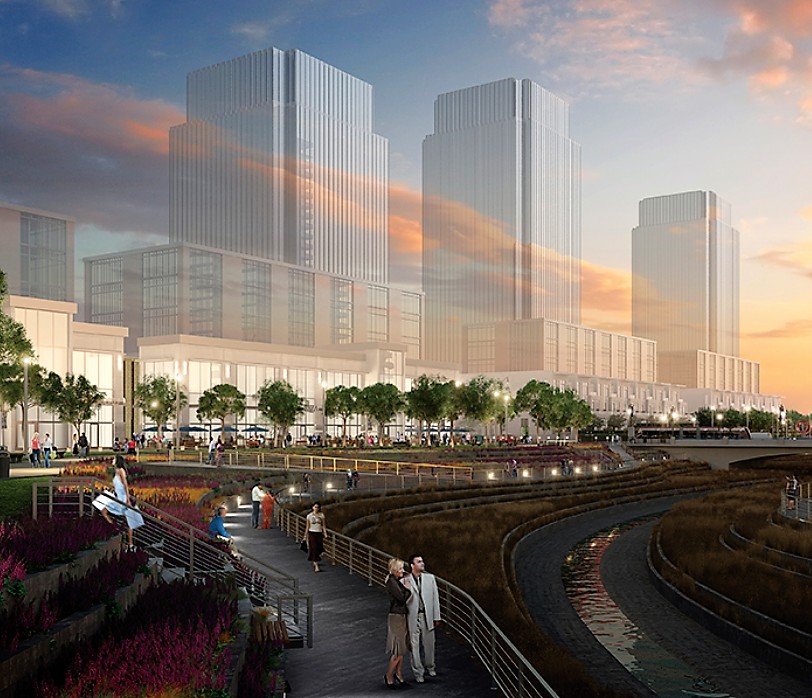
A rendering of Brampton's proposed Riverwalk project to fix downtown flood problems
The novel coronavirus is an existential threat, and epidemiologists think it might come in waves. Finding a vaccine might prove elusive, and so the catastrophic cost associated with it remains open-ended.
Whatever crisis Mississauga or Brampton faced in the past got solved because the price tag was fairly reasonable and fixed. That money seems like chump change now compared to what might be needed to get us through this pandemic.
Mississauga, Brampton and the two higher levels of government will continue to ad-lib their response because, to be honest, no one has a clue how or when it might end.
How cities manage to produce balanced budgets next year might be one of the great mathematical mysteries of the ages. If Mississauga and Brampton’s CFOs do manage to pull it off, they should become charter members of the Pythagorean Brotherhood.
There has been a sprinkling of good news during the crisis. In Brampton, the city’s backyard gardens program was launched to help secure a fresh supply of food for residents and even help local food banks. Officials expected about a thousand residents to sign up; it got more than 11,000. In Mississauga, the city’s fire department donated $100,000 to the local food bank, which needs all the help it can get at a time when demand is at an all-time high.
But most of the news is grim, and on the financial front, getting grimmer.
Trying to estimate a final cost for this man-made pandemic, is like costing out the recovery from an aerial assault during a war while the bombs are still falling. Brown and Crombie call this “unprecedented times,” and unlike other disasters, it is scary at both a personal and financial level. A massive forest fire will eventually burn itself out, a flood will recede, a hurricane touches down, then moves on. But a virus lingers, and this one continues to release its deadly spread.
Yes, the inspirational "We’re all in this together,” keeps our spirits high, but another darker one has also emerged: "We just don’t know what we’re facing, or what we should do.”
Mississauga taxpayers were once the envy of the province because McCallion insisted on zero-percent tax hikes. With city coffers engorged by development fees, she gained rock star status, and continued to win massive pluralities until her retirement. But since her departure, the true costs have hit home with a thud, and the pandemic has brought into sharp focus the economic challenges faced there, and in Brampton.
McCallion brought the funding issue up from the time she first took office in 1978. She headed up the Big City Mayors conference and warned provincial officials the dam holding back infrastructure needs was about to burst. Mature cities would drown in debt if not given new revenue sources.
The Hazel way – her way or the highway – was something to behold, something to admire, and something to dread – especially if you were in opposition. But by good planning or simple happenstance, she ruled over the greatest economic expansion in the city’s history. She rode the wave, but wanted more: independence from a wasteful fourth tier of government; and a more expansive funding formula that didn’t rely on just property taxes.
Her city’s development fees could no longer cover costs, and by the time McCallion left office in 2014, Mississauga was stymied by massive infrastructure shortfalls as assets needed renewal after the original building charges had been used to construct all the new roads, bridges and other infrastructure.
A recent 2020 Survival Guide Study, an Angus Reid poll of 1,504 Canadians, found “Canadian households are more vulnerable than ever as COVID-19 gives rise to a new wave of financial worries and consumer debt.” Keith Emery, co-CEO of Credit Canada, added, “As we have consistently seen, financial insecurity, healthcare and mental health are inexorably linked.”
This anxiety is spilling into the offices of the people charged with running city finances. While repeating, “We’re in this together,” is inspiration, another truth is that cities are not in it together with the province and the federal government. It’s a very patriarchal relationship, with the junior partners reduced to going cap in hand for financial bailouts.
But cities are powerful economic engines, and McCallion was never shy in telling that to the higher ups at Queen’s Park and Ottawa during her colourful run as mayor. Her governance model was based on the training methods of long-distance runners. The idea was to make sure you always had something left in reserve.
Which makes her decision to insist on zero tax increases, even curiouser.
McCallion’s model was flawed and she was blinded by development revenues that were mistaken for a permanent panacea, but her disciple in Brampton, Mayor Patrick Brown, has followed her lead – leaving that city even more vulnerable to the vagaries of a pandemic.
Unlike Mississauga in the ‘80s, Brampton is not swimming in excess development revenues. Despite the financial situation the city faced, with a mounting list of badly needed projects to get his adopted city back on track after two decades of lost leadership, Brown needed the tax hold to build a political brand, in the image of McCallion’s popularity. Only his slogan might be: The mayor who killed his city’s revenues right before a crisis.
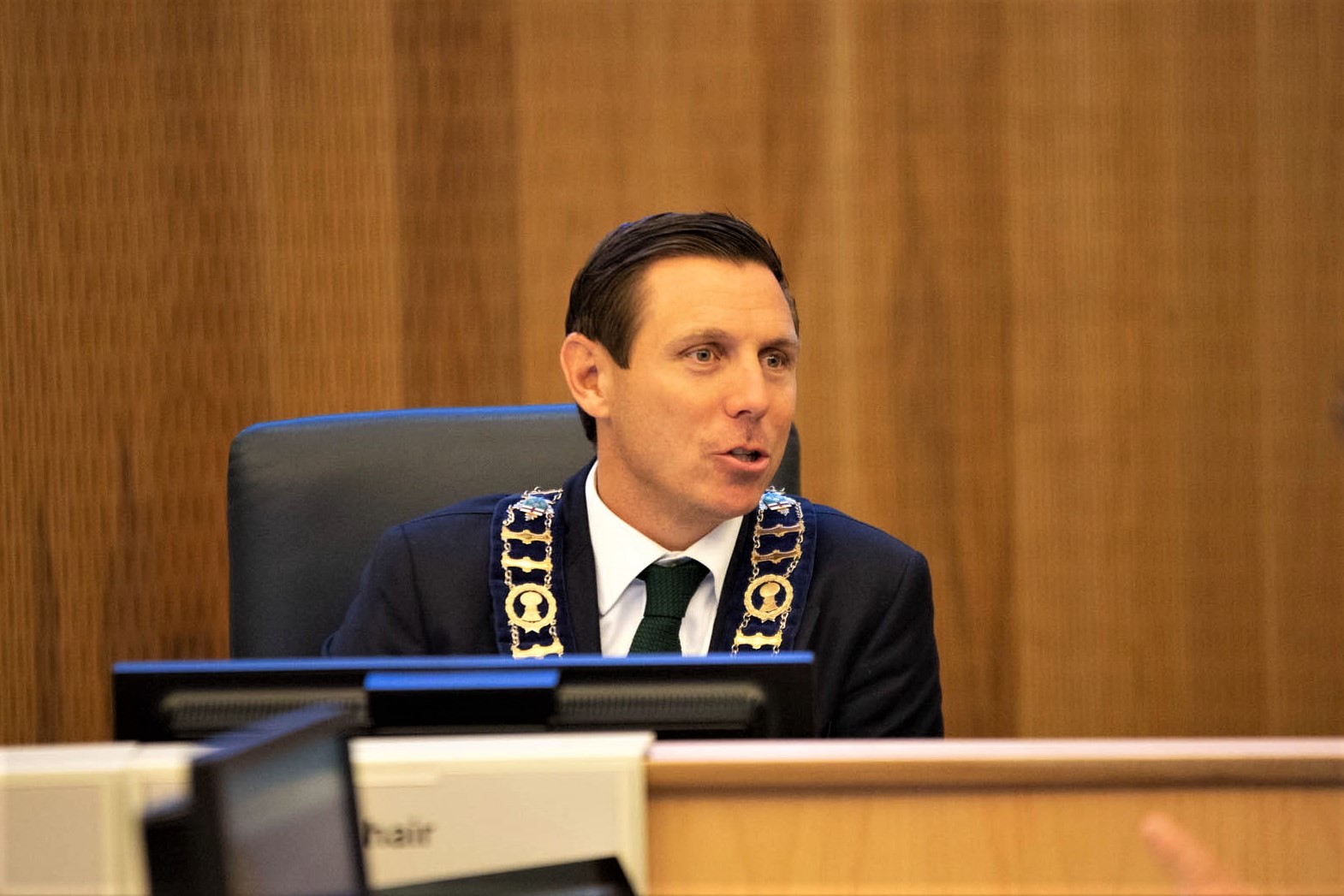
Mayor Patrick Brown
The natural disasters that hammered Mississauga and Brampton over past generations, were solvable. But pandemics are different and can spook even a veteran politico or CFO.
One thing is clear: it has exposed major fault lines in the makeup of our different levels of government.
When a nasty ice storm blanketed Mississauga and Brampton during the 2013 holiday season, it left residents with one big mess: no power, and huge cleanup costs. It was a defiant McCallion who gathered together the other GTA Mayors at the Living Arts Centre to discuss how the province and the feds could help with the costs of cleanup.
Ontario’s municipal affairs minister Linda Jeffrey was there to hear their gripes, and take in the mayors’ concerns, and take their money ask of $270 million back to her boss, premier Kathleen Wynne.
No federal officials were there to represent prime minister Stephen Harper, or pass along his portion of the bill. McCallion and then Brampton mayor Susan Fennell gave them a March 1st deadline to divide it into thirds. McCallion was irked because the rich feds and province were only paying one-third each, which was proportionally smaller than what money-starved cities could afford. But at least there was a partnership, which was not always the case.
In McCallion’s last ‘State of the City’ address in 2014, she talked about how her city had to brace for the present and the future. She brought up the “unexpected” costs argument again and pointed to recent floods and an infestation of the Emerald Ash Borer as examples of how costs can magically appear out of left field and exhaust a city’s finances. Her speech officially ended her long run at the top, and soon Crombie faced the harsh reality of paying for infrastructure shortages that had been created and ignored by her populist predecessor.
The unexpected costs from this pandemic has upped the need for tri-governmental co-operation, but cities are still largely beholden to the higher ups to keep them financially afloat.
The 600-plus pages of Mississauga’s 2020 budget document shows its fiscal house will remain challenged under the current distribution of tax revenues that are charged to the public. The same holds true for Brampton, which has embraced the McCallion Doctrine of zero tax hikes. It was an ego-driven and cynical political ploy then and remains so today.
While the feds and the provinces have downloaded services like housing, early child-care, and long-term care for seniors to local jurisdictions, the property tax pool shrinks relative to inflation and the exponential costs it has to cover, especially in Brampton where costly sprawl that can’t pay for itself is still pushed by people such as Councillor Michael Palleschi.
There’s little mystery why cities need to be bailed out during times of crisis. Penalosa said it’s time to throw the balls up into the air and come up with a new, non-traditional way of funding cities.
He told The Pointer: cities have to “act as if you are in a crisis – because you are.”
COVID-19 is impacting all Canadians. At a time when vital public information is needed by everyone, The Pointer has taken down our paywall on all stories relating to the pandemic to ensure every resident of Brampton and Mississauga has access to the facts. For those who are able, we encourage you to consider a subscription. This will help us report on important public interest issues the community needs to know about now more than ever. You can register for a 30-day free trial HERE. Thereafter, The Pointer will charge $10 a month and you can cancel any time right on the website. Thank you.
Submit a correction about this story


